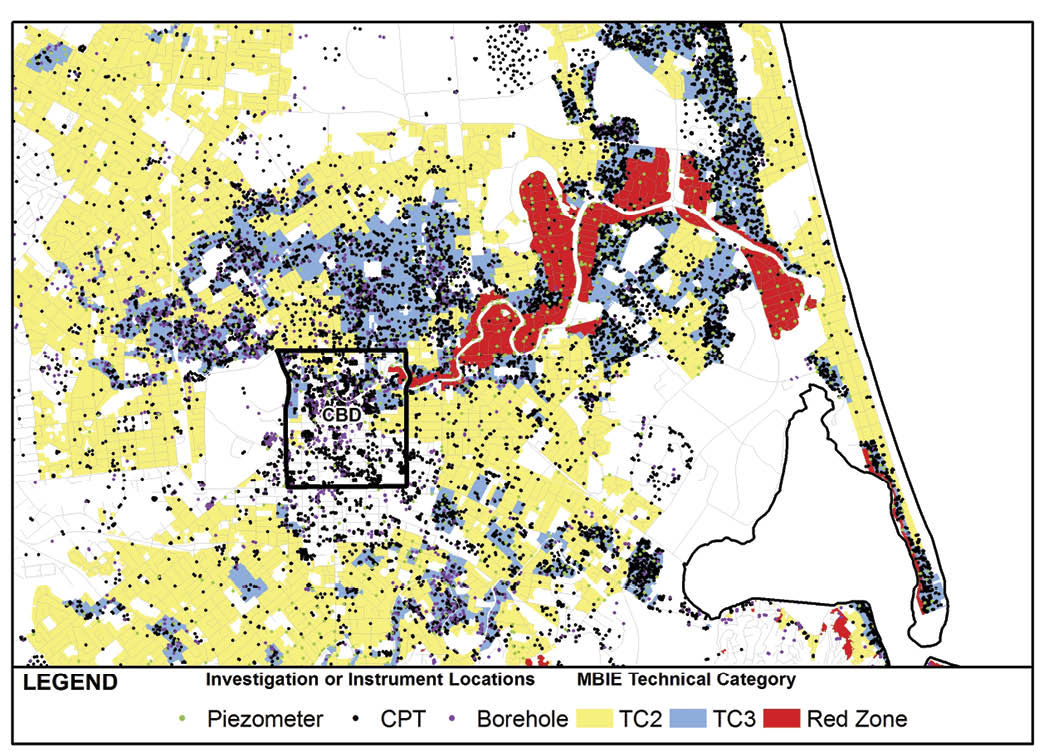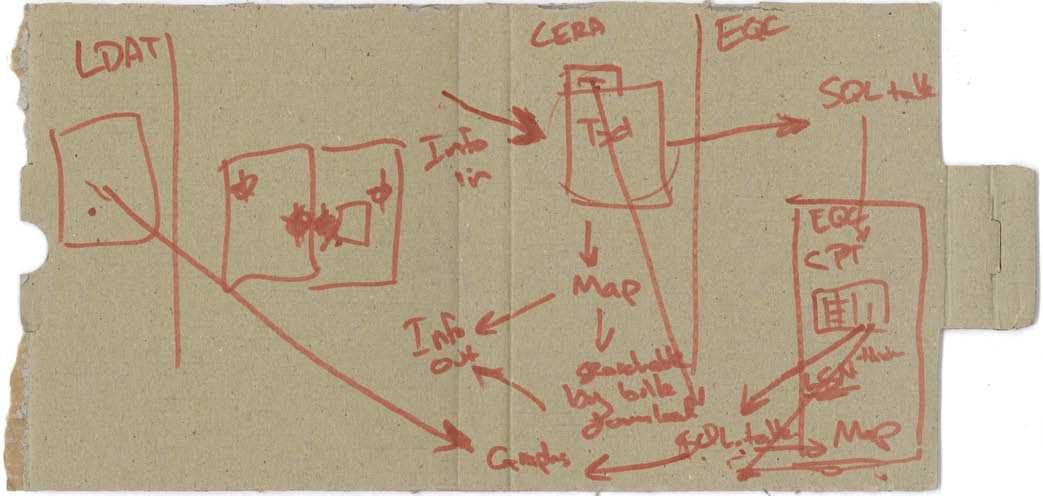
Sketch on a cardboard box results in world first and Gold Award


An idea that began as a sketch on a cardboard box to expedite the Canterbury rebuild, then developed into an important world first, has just won a prestigious gold award.
From September 2010, EQC commissioned thousands of geotechnical investigations to better understand the soil and determine its resilience in Canterbury. Working out how to share that data, and in a way that others could organise, was important to the recovery. CERA had determined it could take 30 years and cost millions of dollars, if property owners had had to commission their own geotechnical investigations before consent and rebuild.
Tonkin + Taylor engineer Dr Sjoerd van Ballegooy sketched out a solution that developed into an open source, cloud-based platform to upload, download and share geotechnical investigation data to help facilitate the rebuild.

The Canterbury Geotechnical Database was born. The online database was designed by Tonkin + Taylor engineers and IT developers with the collaboration of CERA, DBH (now MBIE) and EQC. EQC seeded the database with the $30M worth of data it had commissioned and this contribution was integral in the CGD gaining traction as a collaborative tool for professionals.
The professional engineering community, councils, insurers, academics and researchers began to experience the benefits of being able to access and share geotechnical data which had not previously been possible.
“The data sharing model benefits the whole community with significant environmental, sustainability, safety and cost advantages. Having a large database of information that continues to grow, means we are able to develop a much richer understanding of the environment and our response to it is more informed”, says Tonkin + Taylor’s Natural Hazard Resilience Leader, Richard Reinen-Hamill.
The success of the CGD encouraged MBIE and T+T to extend the model nationwide and, earlier this year the New Zealand Geotechnical Database (NZGD) went live.
“The NZGD has saved and will continue to save New Zealanders who are building, rebuilding, developing and redeveloping property thousands of dollars per site in geotechnical investigations and provides a lot more reassurance about the ground under our feet, and we know from the Canterbury Earthquake Sequence just how important that is to us all”.
“It’s a world first. Other countries are trialing the model and looking at building their own country specific cloud-based open-source geotechnical databases.”
As of this week, 60,000 geotechnical investigations have been uploaded to the NZGD. The database includes cone penetration tests, boreholes, piezometers results and laboratory tests. It helps engineers determine localised ground conditions, appropriate foundation strengths and enables close examination and modelling of ground and built infrastructure performance.
“At the moment, the majority of those are from Canterbury, making it easy to see why Christchurch has been described as the most investigated and researched city in the world”.
GOLD AWARD
The Canterbury Geotechnical Database was awarded Gold at the ACENZ Innovate Awards on Friday night in Auckland. (Details in this issue).
“We are rapt the tool has been recognised by our peers and sincerely hope the award will draw more attention to the NZGD so all geotechnical professionals in NZ begin using it as a matter of routine, and more countries take the model and develop their own”, says Richard Reinen-Hamill.
“Ultimately, it has multiple uses including for strategic purposes such as increasing community resilience, planning for future natural disasters, catastrophe loss modelling and informing regulatory processes”.
“The CGD is one of the positive lasting legacies to come out of the Canterbury Earthquake Sequence. It’s incredibly rewarding to think that together with CERA, MBIE and EQC we may have made a lasting contribution to the understanding of NZ’s complex ground conditions in an effort to build a more resilient future and that these practices are now being applied internationally”.

